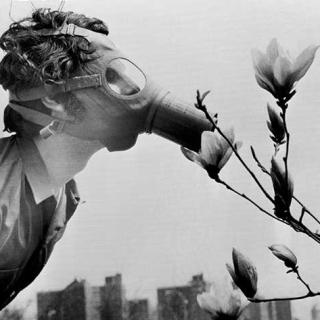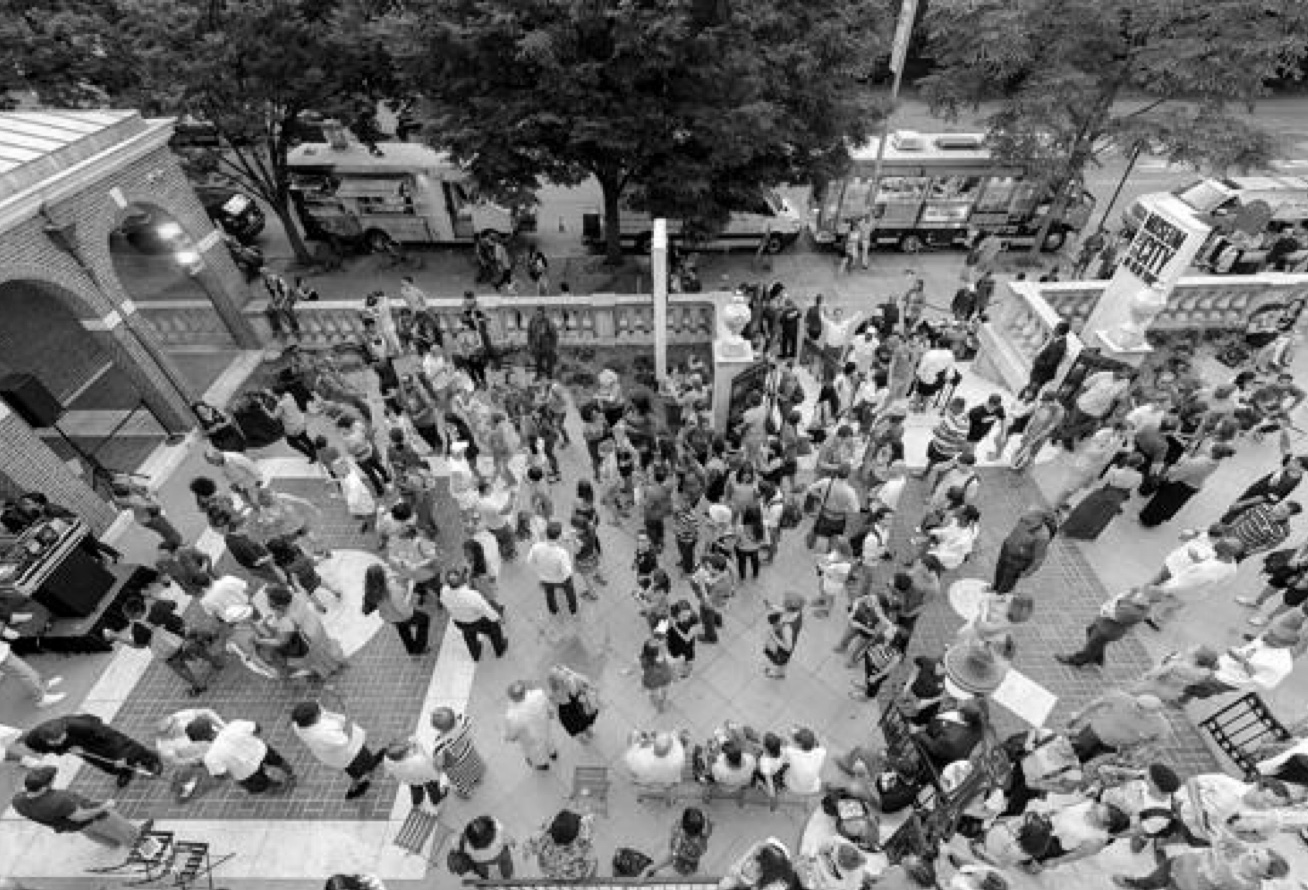Environmentalism
Earth Day and Environmentalism in the City
1962-1990
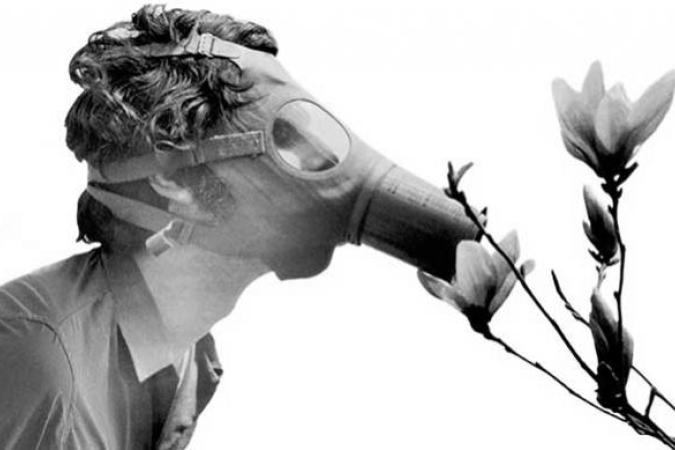
Back to Exhibitions
More than 100,000 New Yorkers celebrated the first Earth Day on April 22, 1970, forming the largest gathering in the nationwide celebration. New Yorkers flocked to Union Square for speeches and concerts. Mayor John V. Lindsay closed Fifth Avenue to cars, enabling marches and picnics in the blocked-off streets.
Initiated the previous year by Wisconsin Senator Gaylord Nelson, Earth Day events were organized nationally by a handful of young activists and local volunteers. Originally envisioned as an antiwar-style “teach-in” at colleges, Earth Day went beyond campus activism to unite anti-litter campaigns by schoolchildren, mothers who sought cleaner air, protestors of pesticides, and proponents of population control together under the banner of “a future worth living.”
The first Earth Day marked a pivotal event in the birth of the environmental movement, giving New Yorkers new awareness and motivation to “green” their city. Some viewed the festivities as bad for business or a distraction from other issues. Yet, ultimately, support for Earth Day exceeded expectations. By the end of 1970, the Nixon administration established the Environmental Protection Agency and passed the Clean Air Act.
Environmentalism gained momentum in New York in the 1970s and 1980s. Residents created recycling centers and community gardens, and environmental justice activists fought pollution sources clustered in poorer neighborhoods. The city is cleaner today, but environmental concerns remain. Hurricane Sandy in 2012 spurred many New Yorkers to confront climate change. In September 2014, over 300,000 people joined the People’s Climate March in Manhattan to urge world leaders to prioritize global warming.
Meet the Activists
Peggy Shepard
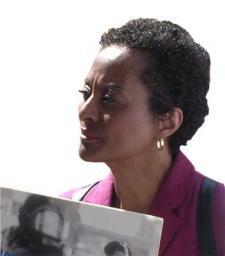
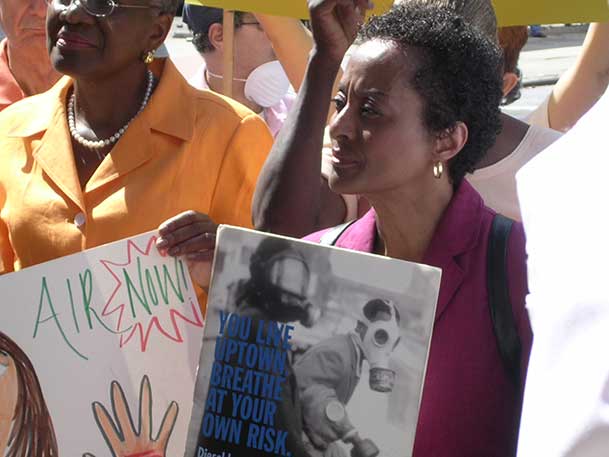
Peggy Shepard
Peggy Shepard, Chuck Sutton, and Vernice Miller-Travis founded West Harlem Environmental Action, later known as WE ACT for Environmental Justice, in 1988 to fight the North River Sewage Treatment Plant and other environmental concerns in northern Manhattan. They successfully sued the City to force it to clean up the Plant and became one of the most important organizations that connected racism, poverty, and the environment in the 1980s and 1990s. Peggy Shepard continues to run the organization and fight for environmental justice.
Image Info: Courtesy Municipal Arts Society.
Hazel Henderson
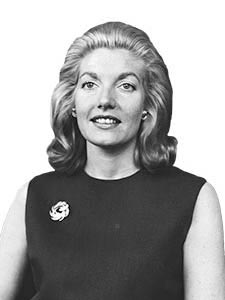
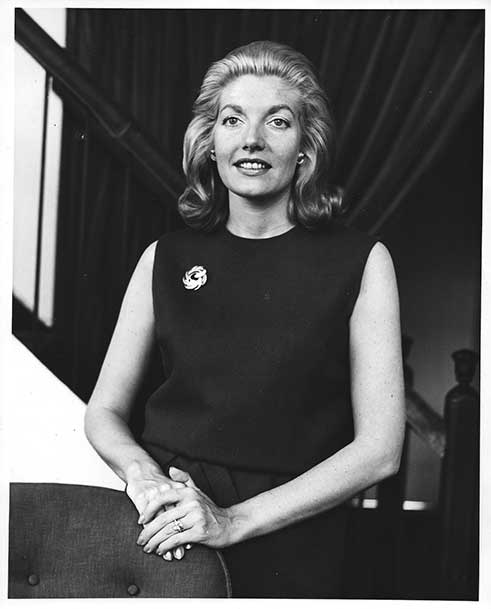
Hazel Henderson
Hazel Henderson co-founded Citizens for Clean Air in 1964 out of concern for children. As a young stay-at-home mother, she handed out flyers to other mothers in Central Park and attracted 20,000 members. She also worked with the Carl Ally agency to create a successful advertising campaign about pollution in the city. Henderson became a lifelong environmental activist in the process and continues to fight for sustainable development.
Image Info: 1964, Courtesy Hazel Henderson.
Peter Hallerman
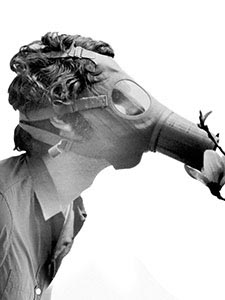
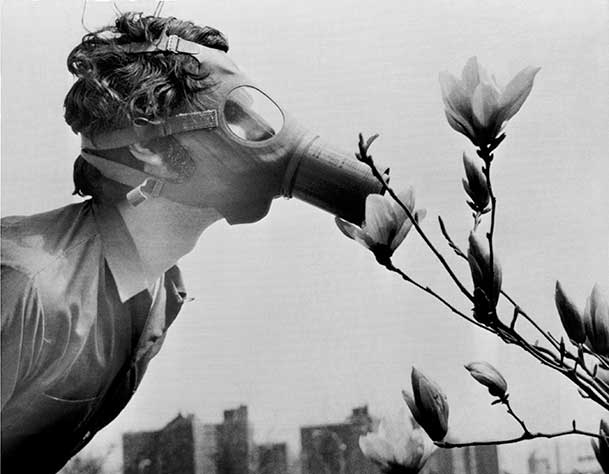
Peter Hallerman
Peter Hallerman, a student at Pace College, wore his mother’s gas mask—used during her service as a nurse during World War II— to protest pollution during an Earth Day demonstration in City Hall Park. This photo was published widely and became an iconic image of the first Earth Day.
Image Info: April 22, 1970, Courtesy Associated Press.
Objects & Images
Midtown And Lower Manhattan Covered In Smog
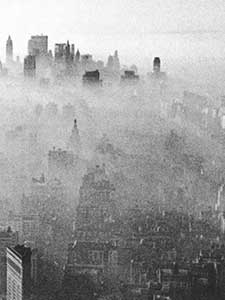
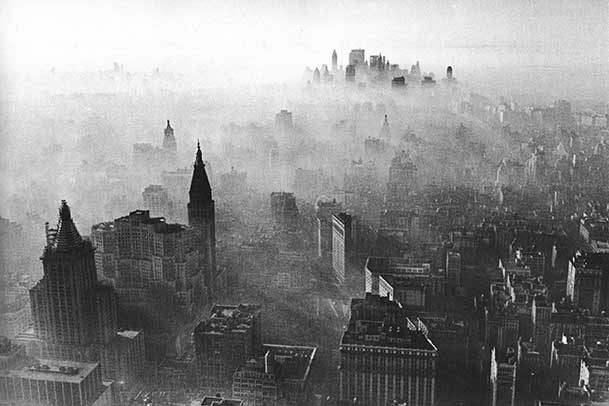
Midtown And Lower Manhattan Covered In Smog
In November 1966, a thick smog temporarily blanketed the city, causing a range of reported health problems that included death.
Image Info: Andy Blair, 1966, Courtesy of the photographer.
Flyer, “The Question Is: Survival”
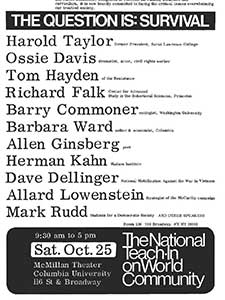
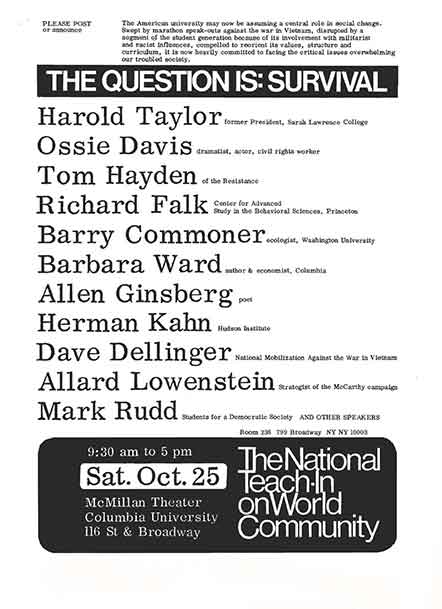
Flyer, “The Question Is: Survival”
This flyer advertised an October 1969 event at Columbia University that included “the ecological crisis” as a major theme. The participation of civil rights activist Ossie Davis, Beat poet Allen Ginsberg, peace activist David Dellinger, and student activists Tom Hayden and Mark Rudd, alongside veteran environmentalist Barry Commoner, show the concern a range of activists began to show about the environment in the late 1960s.
Image Info: The National Teach-In on World Community, 1969, Courtesy Wisconsin Historical Society, Gaylord Nelson Papers Collection.
Advertisement, “April 22. Earth Day.”
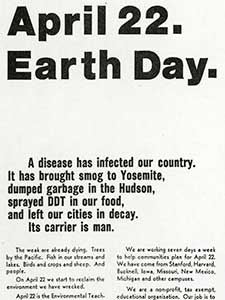
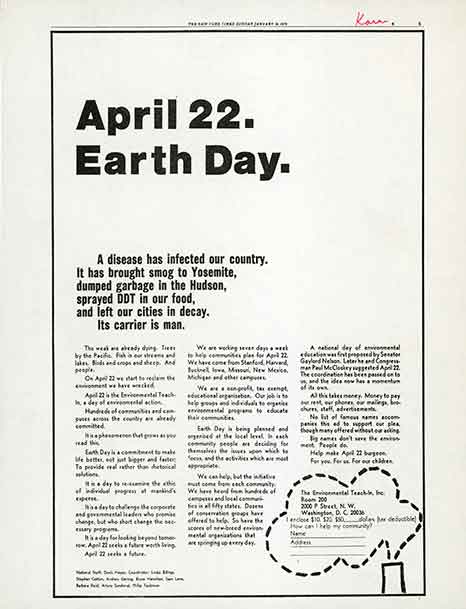
Advertisement, “April 22. Earth Day.”
This advertisement in The New York Times by the organizers of Earth Day generated widespread interest. Initially envisioned as a “teach-in” in the model of similar events on college campuses, Earth Day organizers expanded the event beyond colleges after the publication of this ad.
Image Info: The Environmental Teach-In, Inc., The New York Times, January 18, 1970, Courtesy Wisconsin Historical Society, Gaylord Nelson Papers Collection.
Give Earth A Chance
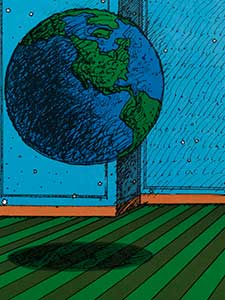
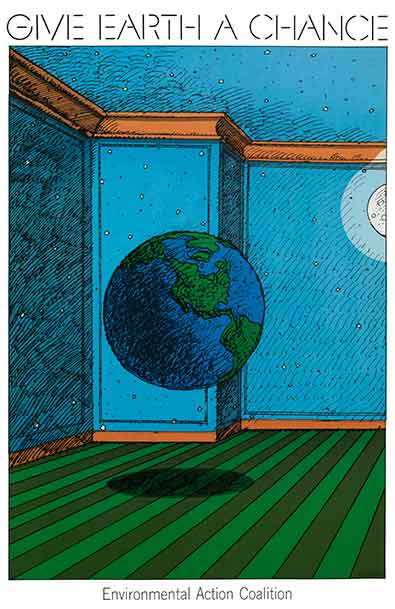
Give Earth A Chance
As the center of the art and media worlds, New York played a major role in producing cultural materials for Earth Day. Graphic designer and lifelong New Yorker Milton Glaser created this poster for the Environmental Action Coalition, the permanent group that emerged from organizing the first Earth Day in 1970. This was the first of many environmental graphics Glaser would create.
Image Info: Milton Glaser, 1970, Offset Lithograph, Courtesy Milton Glaser Inc.
Daily News
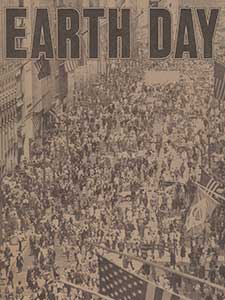
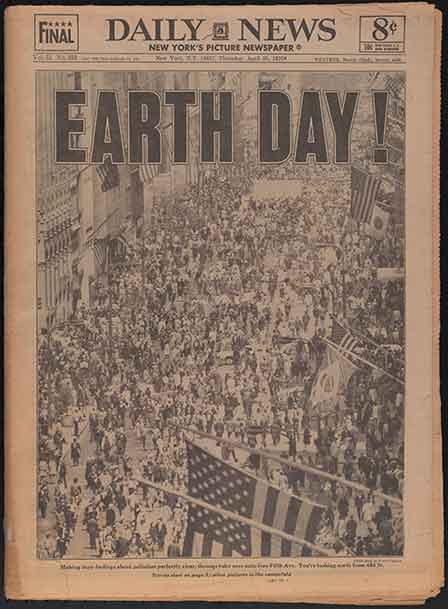
Daily News
The April 23, 1970, edition of the Daily News provided extensive coverage of the first Earth Day in New York. Some companies worried about the day’s impact on business, and some activists viewed environmentalism as a distraction from more pressing issues. However, news outlets ultimately emphasized the festive tone of the day’s events. At a moment when protests between police and protestors were often confrontational, the Daily News reported that there were no arrests or disturbances on this occasion.
Image Info: NY Daily News via Getty Images, April 23, 1970.
Girls Sweeping On Earth Day
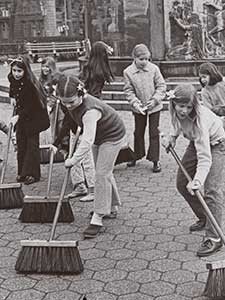
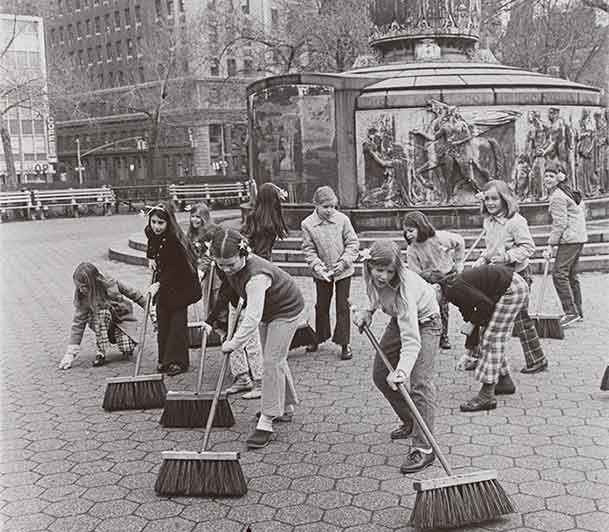
Girls Sweeping On Earth Day
Schoolchildren from across the city participated in the first Earth Day. The fourth grade class at the Convent of the Sacred Heart school in Manhattan, shown here, swept a portion of Union Square park.
Image Info: April 22, 1970, Courtesy Tamiment Library & Robert F. Wagner Labor Archives, New York University.
Mayor John V. Lindsay
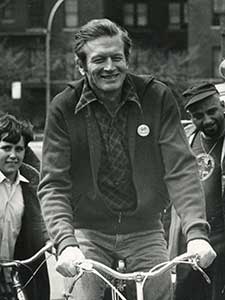
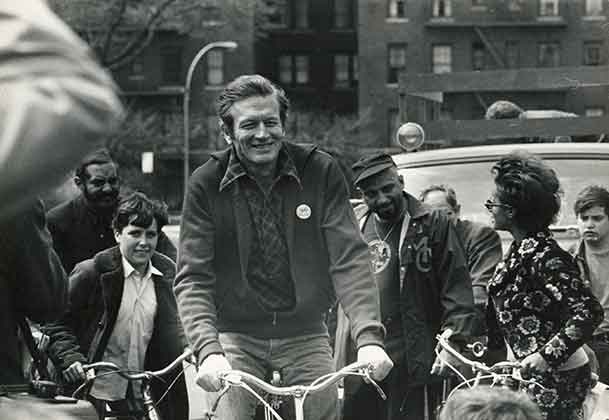
Mayor John V. Lindsay
John V. Lindsay supported a range of environmental initiatives as mayor from 1966 to 1973. In 1968, he signed legislation creating the municipal Environmental Protection Administration (EPA), the first organization of its kind. Lindsay used early Earth Days to advocate for fewer cars, and he experimented with closing Fifth Avenue to traffic every Sunday. On the first Earth Day, Lindsay’s speech connected environmental concerns with broader economic challenges, noting that “the business of pollution is the twin brother of the business of poverty and despair.”
Image Info: Earth Day, 1971, Courtesy Flickr.
Earth Day Buttons
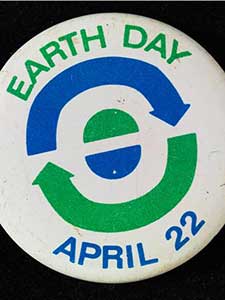
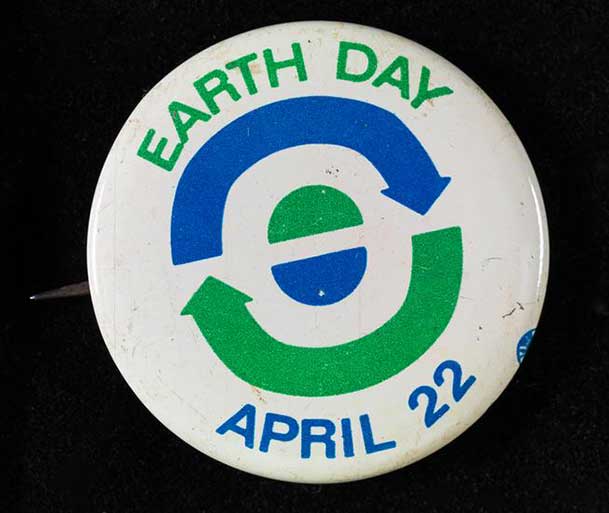
Earth Day Buttons
These pins span 20 years of Earth Day, from the second event in 1971 to the 20th anniversary in 1990. The 1990 Earth Day celebration brought nearly one million people to Central Park.
Image Info: Museum of the City of New York, 96.184.45 and Gift of Mrs. Mary M. Cope, 97.102.28
Flyer, “New York City Has Tons Of Reasons To Expand Recycling”
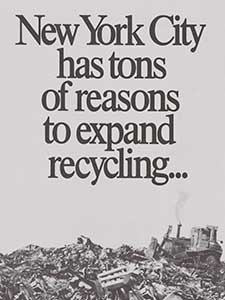
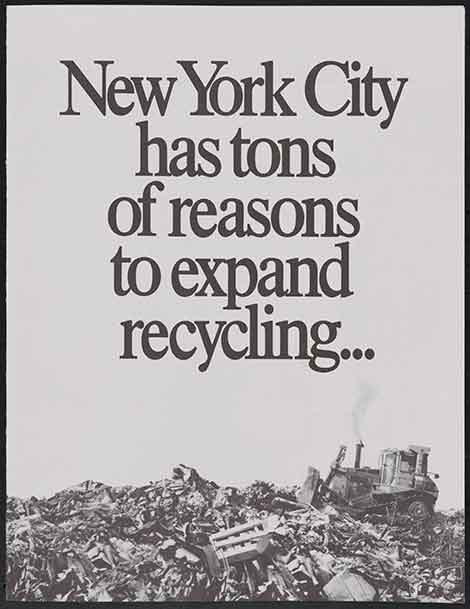
Flyer, “New York City Has Tons Of Reasons To Expand Recycling”
Recycling efforts began in the 1970s through community-led recycling centers. Activist groups pushed the city to stop building incinerators and to start administering recycling, and in 1986, the New York City Department of Sanitation began curbside recycling in lower Manhattan. In 1989, the city passed Local Law 19, making recycling mandatory citywide, but the law is difficult to enforce, and recycling rates in New York remain lower than in other cities.
Image Info: ca. 1986, Courtesy New York City Department of Sanitation.
Key Events
| Global | Year | Local |
|---|---|---|
| 1881 | The citywide Department of Street Cleaning is created, though routine trash collection and street cleaning do not begin in earnest until 1895 | |
| Rachel Carson’s book Silent Spring helps to launch the new environmental movement | 1962 | |
| 1968 | Under Mayor John V. Lindsay, New York City creates the nation’s first Environmental Protection Administration | |
| Wisconsin Senator Gaylord Nelson conceives of Earth Day | 1969 | |
| First Earth Day celebrated nationwide Federal government creates the national Environmental Protection Agency and passes the Clean Air Act | 1970 | |
| After the defeat of proposals to increase reliance on garbage incinerators, New York City institutes recycling through Local Law 19 | 1989 | |
| 1990 | The 20th anniversary celebration of Earth Day attracts nearly one million people to Central Park | |
| 2001 | Closing of Staten Island’s Fresh Kills, at one point the largest landfill in the United States |
